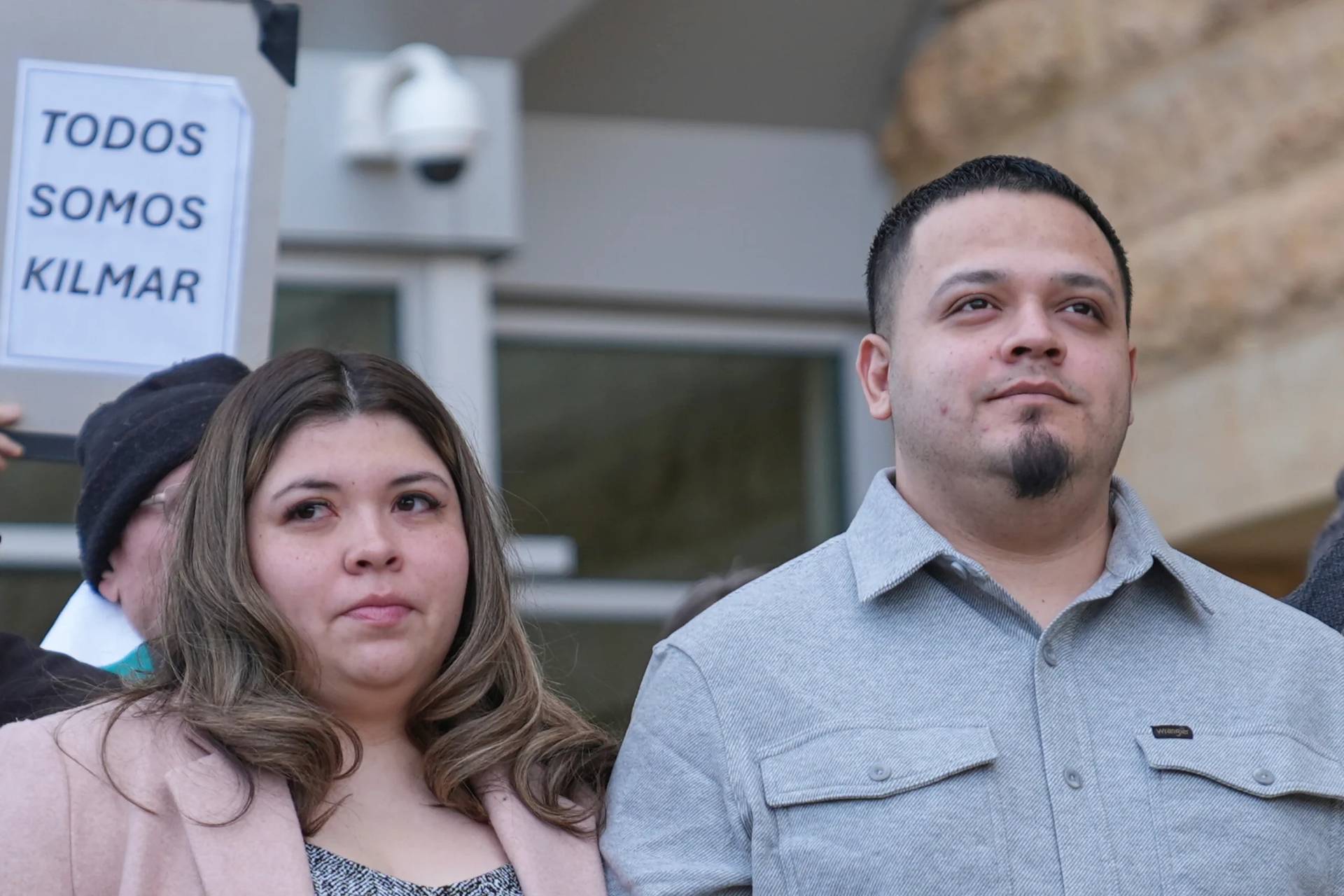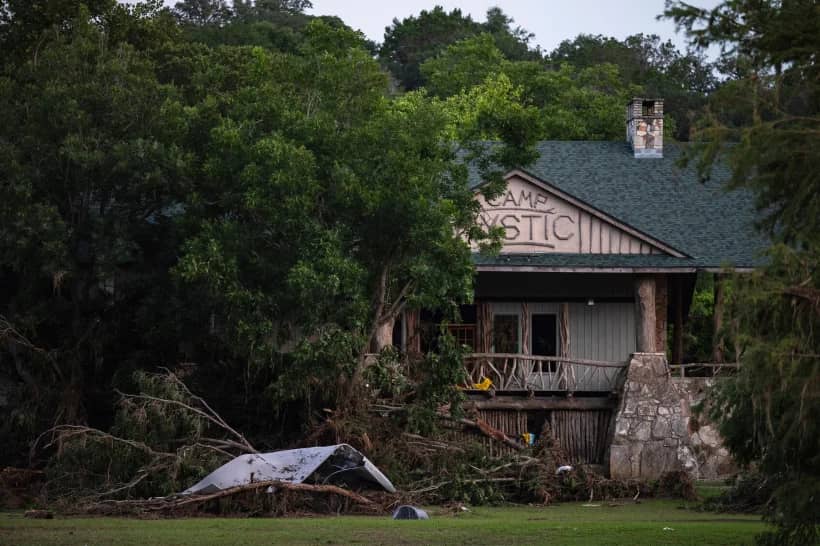NEW YORK – The strongest memory Bishop Gerald Kicanas has of Pope Benedict XVI’s 2008 trip to the U.S. was the pontiff’s visit with disabled youth at St. Joseph’s Seminary in New York, where he witnessed a private and retiring man display the “true pastor in his heart.”
Kicanas, the retired bishop of the Diocese of Tucson, Arizona, was the vice president of the United States Conference of Catholic Bishops at the time. As a USCCB executive officer he had the privilege to follow, or, as he says, “walk in the footsteps” of Benedict for the entire April 2008 papal visit to the States.
Reflecting on the trip, Kicanas kept going back to the idea of Benedict showing the U.S., and world for that matter, the “true pastor” that he was.
“He is such a shy and retiring person that it must have been a huge challenge for him to be on the world stage and to be in such a public role as being the Holy Father, but what I remember most is his gentleness and sensitivity,” Kicanas said. “When he saw someone in need, he responded.”
Crux spoke with Kicanas and others about Benedict’s 2008 papal visit and broader legacy in the U.S., which includes a number of bishop appointments that continue to shape the direction of the U.S. church.
Bishop David Malloy of Rockford, who at the time of the papal visit was the general secretary of the USCCB, and in that role received directions from the Vatican team that planned the papal visit, said that the most impressive part of the trip was how well Benedict was received at each stop.
“I think that was so impressive given his shyness and being in the footsteps and in some ways the shadow of that towering figure of [St. Pope John Paul II],” Malloy, currently chair of the USCCB Committee on International Justice and Peace,” told Crux.
Benedict departed Rome on April 15, 2008, for the papal visit to the U.S. that would go through April 21.
Aboard the papal plane Benedict explained two reasons for the trip. The first was the 200-year anniversary of Baltimore becoming the nation’s first archdiocese, and the simultaneous creation of dioceses in New York, Philadelphia, Boston and Louisville, which he said made it a great time for “reflection on the past” and “reflection … on how to respond to the great challenges of our time in the present and in view of the future.”
The second reason for the trip was to visit the United Nations 60 years after it passed the Universal Declaration of Human Rights, similarly explaining that it’s important for the U.N. to “reconfirm together that everything began at that moment and to recover it for our future.”
The papal plane landed at Andrews Air Force Base in Maryland, where Benedict was received by President George W. Bush and his wife, Laura Bush. The next morning, April 16, Benedict gave an address at a welcome ceremony at the White House, speaking of the importance of freedom, both religious and in general, and the importance of Americans living out their faith – two topics that were mainstays of his addresses throughout the trip.
The ceremony was followed by a meeting between Benedict and Bush in the Oval Office.
From there, Benedict traveled to the National Shrine of the Immaculate Conception in Washington for a celebration of Vespers, and a meeting with the U.S. bishops, where he used a decent portion of his address to discuss the clergy sex abuse crisis, telling the bishops that it is their “God-given responsibility as pastors to bind up the wounds caused by every breach of trust, to foster healing, to promote reconciliation and to reach out with loving concern to those so seriously wronged.”
Perhaps the most significant moment of the papal visit came the next day, April 17, when, in a meeting not listed in the trip’s program, Benedict became the first pope to ever meet with and apologize to clergy sex abuse survivors. Cardinal Seán O’Malley of Boston was present for the meeting and reflected on its significance in a statement after Benedict’s death on Dec. 31, 2022:
“Pope Benedict XVI recognized the pain experienced by survivors and all persons impacted by the abuse crisis,” O’Malley said. “He was then, and at all times remained, committed to the Church supporting their journey towards healing and doing all that was possible to ensure the protection of children, young people, and vulnerable adults.”
Also on April 17, Benedict celebrated Mass at Nationals Park, met with educators at the Catholic University of America, and met with representatives of other religions at the Pope John Paul II Cultural Center in Washington. Tony Spence, the director and editor and chief of Catholic News Service from 2004-2016, told Crux that the interreligious meeting was especially important.
“The results of his work are felt today I think,” Spence said. “That was a great legacy that trip left.”
Benedict Visits the Big Apple
April 17, 2008, was Benedict’s last full day in Washington D.C. The next morning he left for New York, where he would spend the final three days of his trip. The schedule was packed. Over the three days Benedict addressed the United Nations, led an ecumenical prayer service at a German parish, dined with the U.S. Cardinals, celebrated Mass with religious men and women at St. Patrick’s Cathedral, visited with young people and disabled young people at St. Joseph’s Seminary, and rounded things out with a visit to Ground Zero, and Mass for the general public at Yankee Stadium.
Spence particularly remembers Benedict’s visit to Ground Zero, which he said was a “very moving moment for everybody in this country.”
Mark Ackerman had a front row seat to it all, including the moments Benedict had out of the public eye. He was put in charge of planning the New York portion of the papal visit by Cardinal Edward Egan of New York, and unexpectedly by his estimation, spent the three days the Holy Father was in town riding with the secret service in the car directly behind Benedict’s limousine.
“I was with them the whole time. I was at every event. I had the privilege of being in the Holy See mission where he stayed and sharing meals, and spending some personal time with the Holy Father,” Ackerman told Crux. “It was beyond any of my dreams.”
In the private setting, Ackerman described Benedict as “enormously personable,” kind and gentle. He remembers the way the pontiff could greet people in different languages, and the simplicity, humility and piety that he carried himself with.
Ackman also remembers the difference between Benedict in private and public settings, noting that in private settings, like the limousine, he often wanted to have some quiet and alone time.
“But when he got out of the vehicle he was able to turn on this ability to greet the crowds and smile and give that impish grin of his and just make people feel like they were spending a private moment with him, when in fact, they were amongst tens of thousands of people on the curb,” Ackerman said. “He just had this great ability to come out of his shell and do what was part of his ministry at that point in time.”
For the New York portion of the papal visit Ackerman said there was a simple goal he and his team shared with the Vatican: To allow as many people as possible to be in the presence of the Holy Father. In the end they seated approximately a combined 108,000 people across the different events/venues – each person having to provide a name, address and social security number, and go through some level of security depending on how close they were going to be to the Holy Father.
It was a joint effort between the archdiocese, New York City Police Department, FBI, Secret Service, Interpol, and the Vatican to make sure everything ran smoothly.
“What it really came down to was allowing people to be in the presence of the Holy Father and the Holy Father’s magnificent ability to make everyone feel that he was spending a moment with them,” Ackerman said. “We really felt that in the end we gave those 108,000-plus people that opportunity.”
Benedict’s Appointments: A Lasting Influence on U.S. Catholicism
Archbishop Timothy Broglio of the Archdiocese for the Military Services, USA, and Archbishop William Lori of Baltimore, the respective USCCB president and vice president, were both installed to their current dioceses by Benedict. The same is true for Archbishop José Gomez of Los Angeles, and Archbishop Allen Vigneron, whose terms as president and vice president ended in November.
Here’s a list of some of the other U.S. prelates who were installed to their current diocese by Benedict, many of whom hold or have held prominent leadership positions within the USCCB in recent years:
- Cardinal Timothy Dolan of New York
- Archbishop Salvatore Cordileone of San Francisco
- Archbishop Alexander Sample of Portland
- Archbishop Samuel Aquila of Denver
- Archbishop Thomas Wenski of Miami
- Archbishop Paul Coakley of Oklahoma City
- Archbishop Gustavo García-Siller of San Antonio
- Archbishop Jerome Listecki of Milwaukee
- Bishop Kevin Rhoades of Fort Wayne-South Bend
- Bishop David Malloy of Rockford
- Bishop Daniel Flores of Brownsville
Benedict also elevated O’Malley and Cardinal Daniel DiNardo of Galveston-Houston to the College of Cardinals. Dolan also became a cardinal with his appointment to New York.
Spence, who was the director and editor and chief of Catholic News Service from 2004-2016, said that Benedict’s bishop appointments will be a “long lasting legacy.” However, he noted that the appointments didn’t always have a positive impact on the U.S. church, sometimes creating a “rift” between bishops and theologians that hadn’t existed prior.
“The bishops stopped engaging theologians in the Catholic academic field, which is huge, and so there just became a divergence of that, and then we just became the church of rules and not any real theological thought and discussion that reached down into the pews,” Spence said. “That’s a shame. That was a consequence, which I think is very strange considering Benedict was such a fine theologian himself.”
Kicanas said that while he was a USCCB official during Benedict’s pontificate, there wasn’t much room for disagreement with the Holy Father for bishops, either.
“I think when Benedict and even John Paul were pope it was very difficult for a bishop to disagree, to think perhaps differently than the pope gave direction for,” Kicanas said. “Now, of course, it’s different. There are those in the conference who would speak fairly openly about their disagreement with a particular way that Pope Francis was acting or doing.”
That said, when it comes to Benedict’s legacy Kicanas highlighted that his writings are a great contribution to the church both in the U.S. and abroad. Another piece of it, Kicanas said, was the fact that Benedict was likely more comfortable reading and writing but “rose to the occasion” as pope to be a true pastor to the Catholics of the world, which includes the U.S.
“In his gentle, loving way, his eyes were very penetrating,” Kicanas said. “When he looked at you, whether it was a bishop or a child with a disability or a person that he was encountering, his eyes were always penetrating.”
Follow John Lavenburg on Twitter: @johnlavenburg













